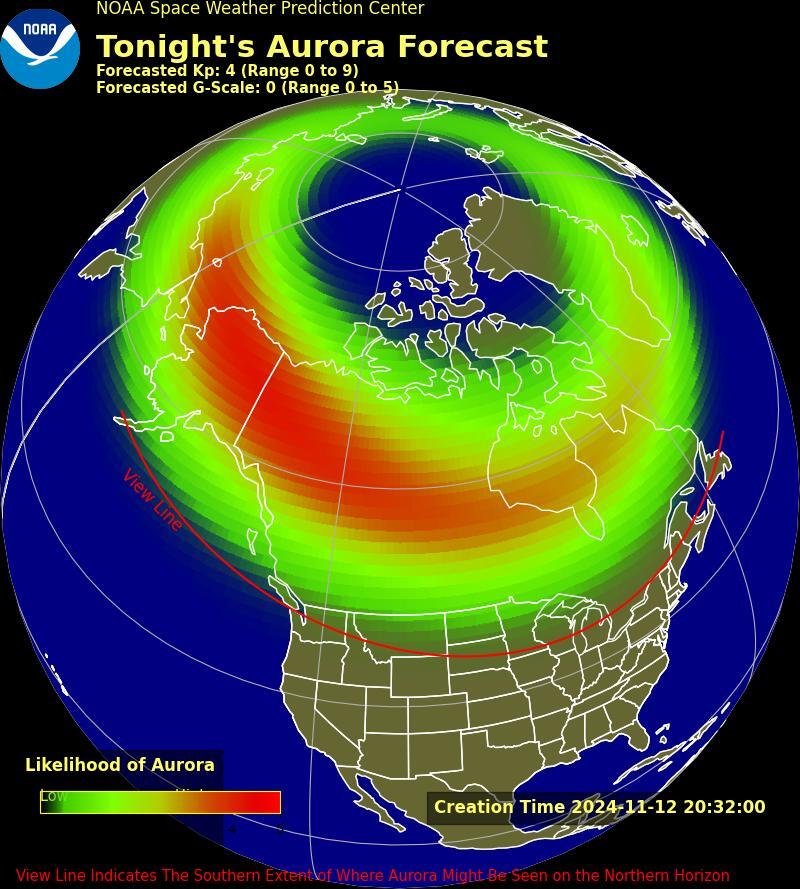Some people in the central northern tier of the U.S. might be able to see the Aurora Borealis (also known as the Northern Lights) on Tuesday night after a recent geomagnetic storm expanded the view line, according to the latest aurora forecast from the National Oceanic and Atmospheric Administration.
Part of northern Montana, North Dakota and Minnesota have a chance of seeing the aurora borealis phenomenon on Tuesday.
There’s also a chance — though lower — for parts of Washington, northern Idaho, South Dakota, Wisconsin, Michigan, and Maine to view the lights based on NOAA’s forecast map.
Last month, NASA said the sun is at a point where its two poles have flipped contributing to more light shows here on Earth and increased visibility of the northern lights.
If the conditions are right, NOAA said the aurora can be seen as far as 621 miles away and does not need to be directly overhead.
- Assault suspect arrested at Great Falls hotel
- Armed man shot by police in Helena
- Property tax bill delays in Cascade County
- Joann opens in new Great Falls location
People should go to a high vantage point away from light pollution to see the Northern Lights.
Using your smartphone to photograph the Northern Lights may also help to see them better.
Two resources for knowing when the Aurora Borealis might be visible in our area in the future are the Space Weather Prediction Center and Soft Serve News.




